Description
About the book :
When the Moplahs were engaged in the Khilafat campaign, the Hindus in Malabar were told that they had stolen the wealth of the Moplahs and beggared them. As a result, Moplahs were poor, and the expenses of the Khilafat campaign must be entirely borne by the Hindus. The Moplahs also made it clear that if Hindus could not give money, they should get the right to extract it from the Hindus in alternate ways. It was also clarified that the funds received from Hindus would be called ‘Jizya’, the most significant public proof of discrimination between Muslims and non-Muslims. The Moplahs also asserted that the Muslims could not live under the Hindus. This attitude was the biggest reason behind Jinnah’s demand for Pakistan. Muslims would openly declare in public meetings that they would cut off the tongue of anyone (Hindu) speaking against their religion.
Furthermore, they asserted that their religion gave them the right to attack temples, idols and idol worshippers. No wonder many temples were destroyed. Savarkar describes atrocities committed in the Sriranga Temple in the fictional Kuttam village. Four minarets were erected atop the Sriranga temple without losing time to make it look like a mosque. Deities were broken, and the pieces were used as footrests. A young cow was slaughtered on the temple premises, and the mosque was ‘purified’ with its blood.
We can understand how horrifying and gruesome this massacre was when the translator says, “This book is not for the squeamish, and I would advise the reader to stop right here if they are shaken by gory details of the targeted massacre of the Hindus by the Moplahs in Malabar.” Veer Savarkar’s writing is so fast-aced that we feel like we are watching a movie, waiting anxiously every moment for something untoward to happen. We must therefore read this novel with bated breath. We shudder as we encounter a never-ending series of brutal murders that boggle our imagination. The reader is forced to wonder if humans are capable of such violence.Veer Savarkar has shown in his book that though Hindus were caught unawares, they fought bravely to the best of their ability. Not only men but women also demonstrated boundless bravery. Many Hindus preferred to die instead of becoming Muslim, even after being grievously injured and imprisoned, and eventually chose death. This massacre also united the Hindu society fractured due to untouchability. The most satisfying aspect of this incident was that the Hindus who had converted to Islam were purified and taken back into Hindu society—an unprecedented event in itself because Hindus had seldom been welcomed back to Hindu society after being converted to Abrahamic faiths. This was a proud and revolutionary moment from this point of view.
In the past, a Hindu king in Malabar had given shelter to a few Muslims. Then he inspired one person from each family of fishermen in his kingdom to become Muslim. Despite this, the number of Muslims remained pretty small. Later, as the translator writes, the terrorists, Hyder Ali and Tipu Sultan, forcibly converted Hindus to Islam in this area by the power of the sword, destroyed Hindu temples, and snatched the land of Hindus and distributed it among Muslims. Even after many such atrocities, Muslims were still a minority at the time of the 1921 massacre, whichbecomes clear from the conversations of the rioting Muslims themselves. Unfortunately, today (according to the 2011 census), the population of Muslims in Malappuram is 70.24 per cent, and that of Hindus is barely 27.60 per cent. It is the only Muslim- majority district in Kerala. Therefore, it is even more urgent that we understand the real character of Muslims today. Furthermore, the communists have done immense harm to the Hindu cause in Kerala. And while Christians and Muslims have thrived and grown, Hindus have been uprooted and weakened.
This book is a translation of the Hindi rendering of the Marathi novel, Moplyanche Band arthaat Mala Kay Tyache, written by great scholar and poet, writer extraordinaire, eminent historian and Maharishi Swatantryaveer, Shri Vinayak Damodar Savarkar, Mopla Kand, arthaat Mujhe isse kya? into English. This translation by the well-established author, Ms Manjula Tekal, will acquaint English readers with the indescribable atrocities perpetrated by the Muslims and the resulting appalling suffering of the Hindus.
This is a remarkable book. As long as this incident remains in our national memory, we can prepare to never let it happen again. From this point of view, the translator deserves our gratitude.
ISBN : 9798885751025 ; Garuda Prakashan ; Pages : 180; Paperback ; Translator : Manjula Tekal

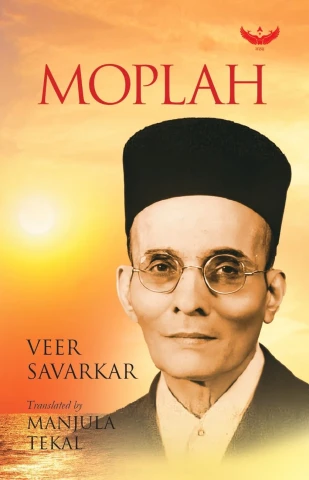

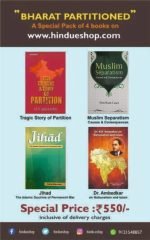

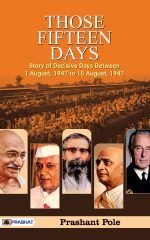
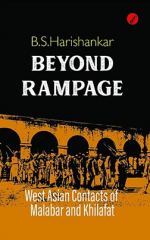
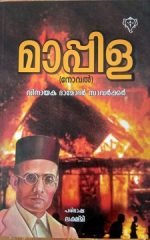
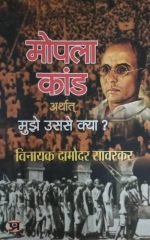
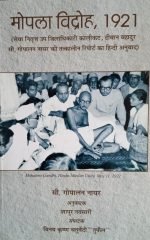
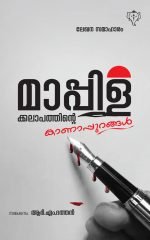
Reviews
There are no reviews yet.